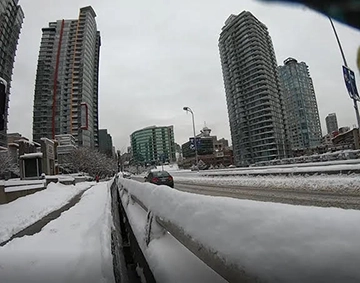Cold weather is creeping in fast, and with it comes a new challenge for drivers: cold rubber on cold pavement. This combination drastically reduces the traction you rely on to keep your car under control, your four wheels gripping the road, and your two hands confidently steering. Take a corner too fast, and that reduced grip can slide you straight into the oncoming lane—or worse, into the ditch.
So, what’s the safe approach? Some suggest braking in a straight line as you approach the corner. This gives you a chance to test the grip before you ask your front wheels to handle two tasks at once: slowing down and turning. Doing both simultaneously doubles the load on your tires’ available traction. And if the demand—your car’s weight, speed, and momentum—exceeds the traction left on that cold, possibly icy road? You’re in a skid. And skids lead to trouble.
Now, here’s the sobering reality: a slip or a close call might wake you up to these dangers, teaching you a valuable lesson about road conditions. But sometimes, you don’t get a second chance. If that slide happens when another car, a biker, a pedestrian, or even a big rig is in the wrong place at the wrong time, everything can change in a single, irreversible moment.
That’s why I take a different approach—one that keeps me far away from “close calls” in the first place. It starts before I even get in the car. I think about the conditions: how slippery it feels underfoot, the color and texture of the road, and subtle changes in surface shine. Once driving, I test traction early—long before I hit any corners. Gentle brake and throttle checks clue me in to whether the road is cooperating or lying in wait.
I don’t like trouble. That’s why I fight for maximum control every single time I drive.
– COOPER
What do you think?





Comments are closed